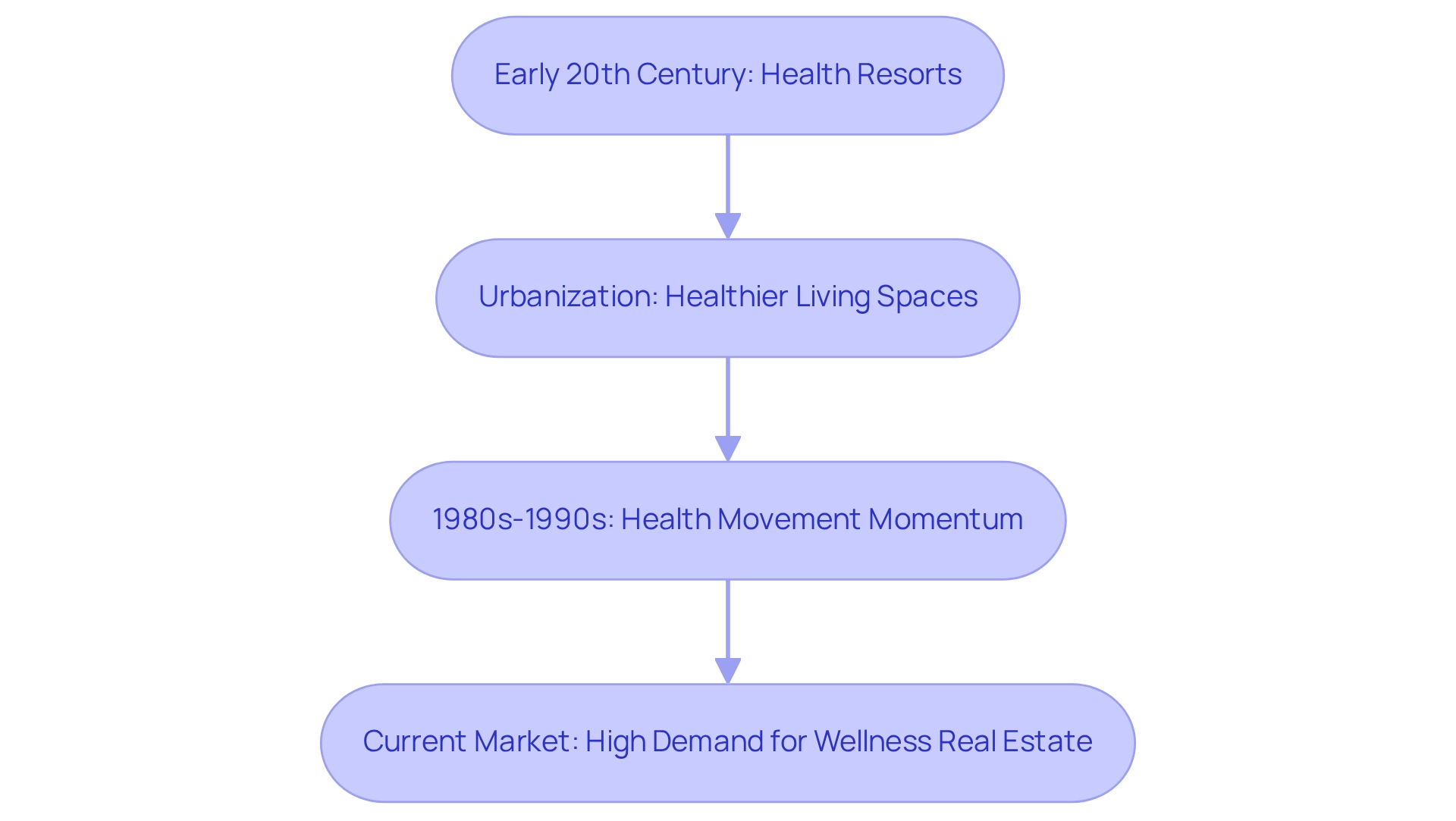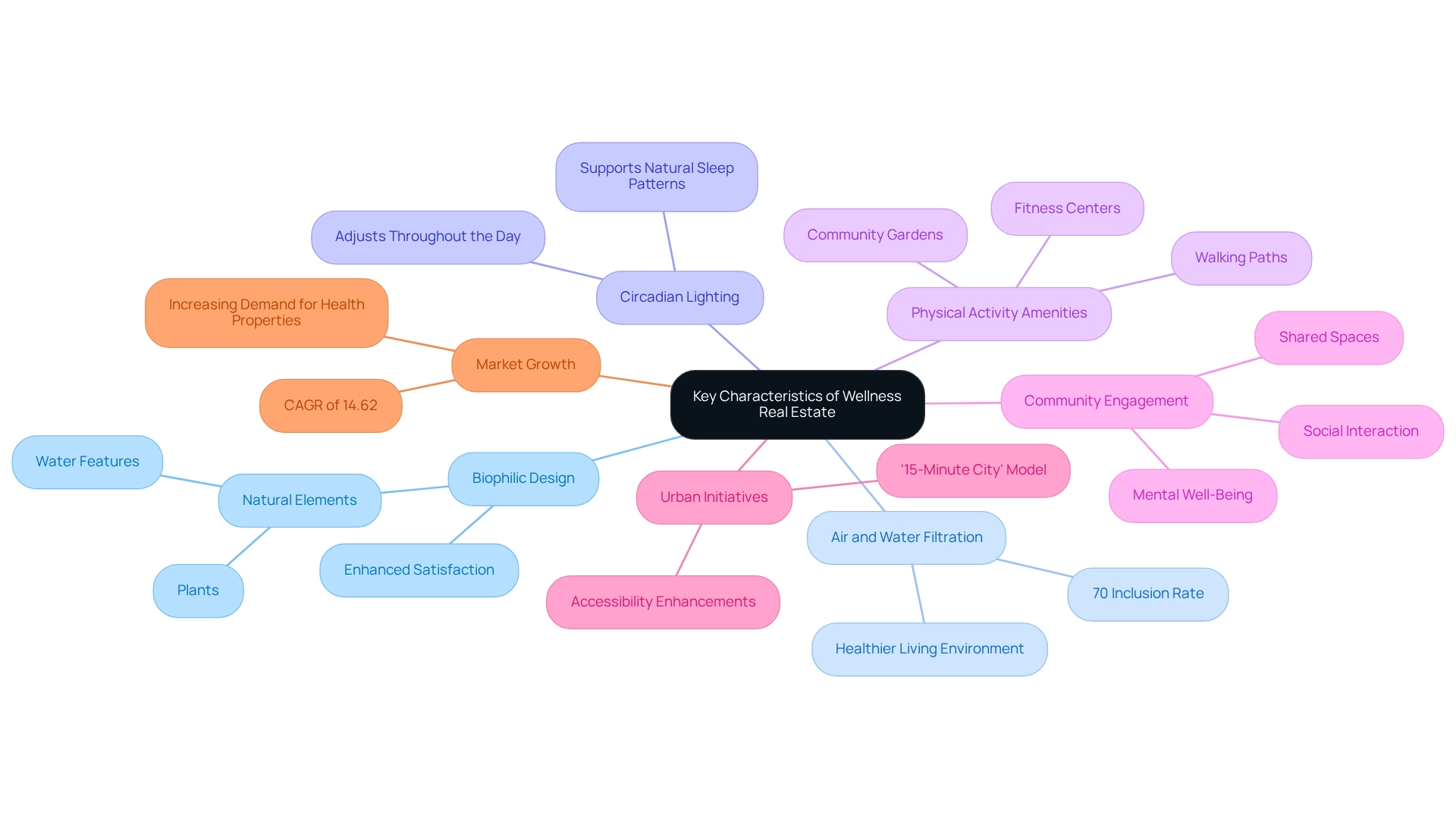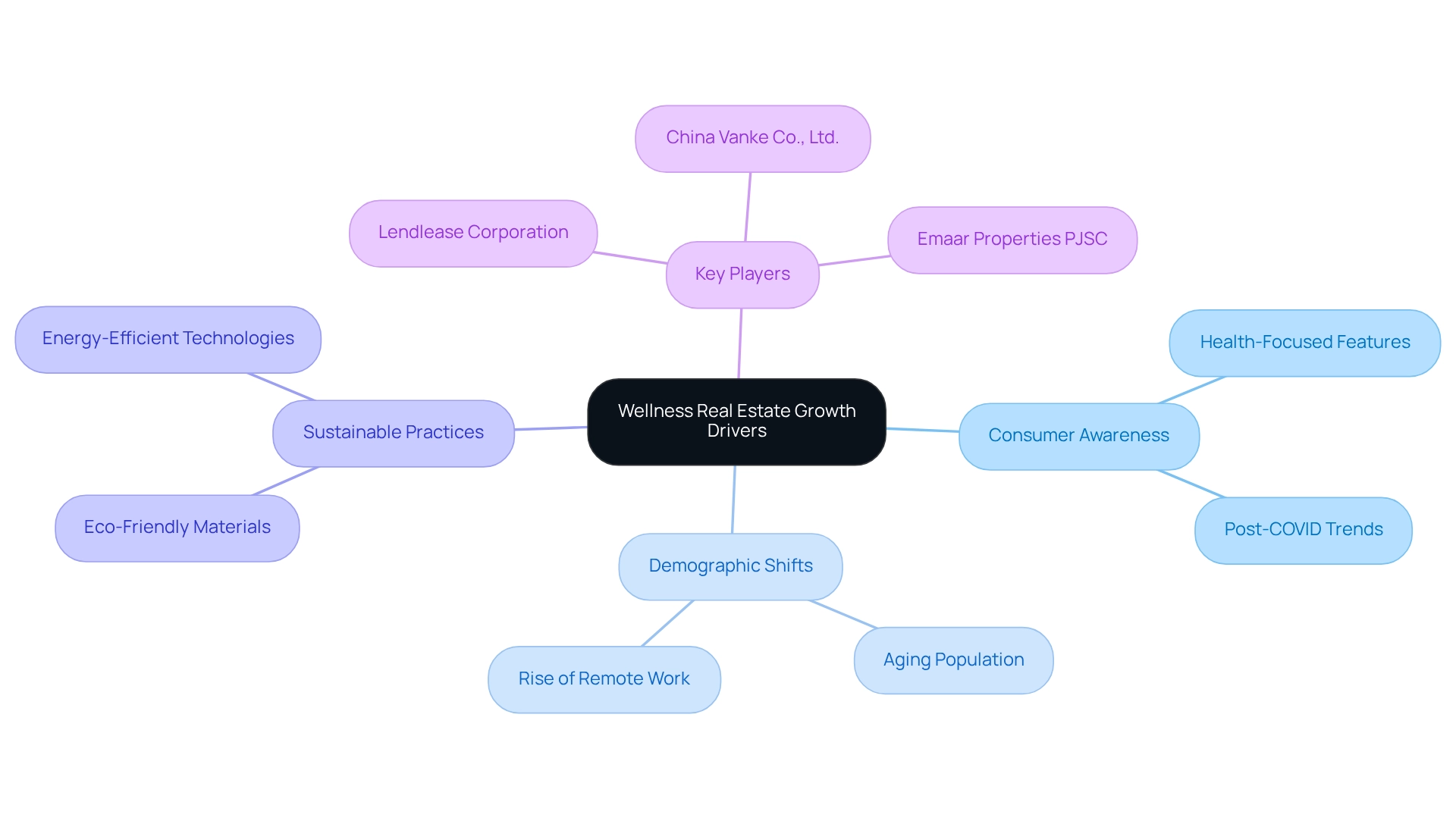Overview
The wellness real estate market represents a significant shift in property design, focusing on enhancing the physical, mental, and emotional health of occupants. Properties in this sector feature:
- Biophilic design
- Advanced filtration systems
- Amenities that promote physical activity
This trend is increasingly evident as consumer demand for health-oriented designs grows, driven by heightened awareness of health and wellness, particularly in the aftermath of the COVID-19 pandemic.
With substantial market growth projected, investors must recognize the implications of these evolving preferences in their strategies. As the market continues to expand, understanding these dynamics will be crucial for making informed investment decisions.
Introduction
The concept of wellness real estate is revolutionizing the design and perception of spaces, emphasizing the enhancement of physical, mental, and emotional well-being for occupants. As more individuals acknowledge the profound connection between their living environments and overall health, this innovative sector is rapidly gaining momentum within the broader real estate market.
With features such as improved air quality, natural lighting, and access to green spaces, wellness properties transcend mere aesthetics; they embody a commitment to sustainability and health-centric living.
This article explores the evolution of wellness real estate, its defining characteristics, and the market trends propelling its swift growth, revealing how these spaces are becoming essential for modern lifestyles.
Define Wellness Real Estate: Concept and Scope
Wellness properties encompass residential and commercial spaces specifically designed to enhance the physical, mental, and emotional health of their occupants. This innovative concept integrates health-focused elements such as improved air quality, abundant natural lighting, and the presence of green areas, creating environments that foster overall well-being. The scope of health-oriented properties transcends mere aesthetics; it embodies a holistic approach that prioritizes well-being and sustainability within living spaces.
As awareness of the connection between personal health and the broader environment grows, the wellness real estate market has gained significant traction within the larger real estate industry. Recent trends reveal that approximately 30% of new developments in the wellness real estate market now incorporate health-oriented features, signaling a shift towards health-conscious living. This evolution not only attracts health-aware consumers but also investors seeking opportunities in the wellness real estate market, which is rapidly expanding. Experts, including Ophelia Yeung, note that health-oriented design and attributes that promote a healthy lifestyle can be offered across various price levels and in diverse regions. Moreover, while the design of health properties may vary considerably, they consistently strive to encourage healthier lifestyles across different markets.
Establishing impactful health communities involves principles such as enhancing well-being, promoting proactive health behaviors, and fostering social connections through supportive policies and management. These principles aim to shift focus from individual health to a communal perspective, recognizing the interdependence of personal and community health.

Trace the Evolution of Wellness Real Estate: Historical Context
The origins of healthy living properties can be traced back to the early 20th century, when health resorts emerged as preferred destinations, highlighting the essential role of the environment in promoting well-being. As urbanization progressed, the focus shifted towards creating healthier living spaces within urban areas. The health movement gained substantial momentum during the 1980s and 1990s, driven by a growing awareness of the impact of lifestyle choices on health outcomes. Currently, the wellness real estate market is at the forefront of property development, driven by strong consumer demand for healthier living environments and significant advancements in building technologies that facilitate health-oriented designs.
Research shows that a notable segment of consumers prefers wellness-oriented solutions in their homes, with 59% willing to pay a premium for such features. This underscores the opportunities for developers in the wellness real estate market who prioritize health and well-being in their projects. Furthermore, a client in Birmingham witnessed a 30% increase in business after implementing sustainable practices, demonstrating the tangible benefits of wellness-oriented developments.
As highlighted by Facts and Factors, the growth in health initiatives and the rising demand for health programs are key drivers of the regional market's expansion.

Identify Key Characteristics of Wellness Real Estate
The wellness real estate market is characterized by several key features that prioritize the health and well-being of its occupants. A prominent aspect is biophilic design, which integrates natural elements such as plants and water features, fostering a deeper connection to nature. This design philosophy is gaining traction, with studies showing that properties incorporating biophilic elements can significantly enhance occupant satisfaction and productivity.
Moreover, advanced air and water filtration systems are prevalent in health-oriented properties, ensuring a healthier living environment. Approximately 70% of health-focused properties now include these systems, reflecting a growing commitment to occupant health. Additionally, circadian lighting systems are designed to adjust throughout the day, supporting natural sleep patterns and overall well-being.
Properties that promote physical activity—such as fitness centers, walking paths, and community gardens—are essential in health-oriented developments. These amenities not only encourage a healthy lifestyle but also enhance community engagement by providing shared spaces that foster social interaction. This focus on community is crucial, as it supports mental well-being and cultivates a sense of belonging among residents. The integration of urban initiatives like the '15-minute city' model exemplifies how developers are reshaping environments to promote healthier lifestyles, highlighting the growth in the wellness real estate market, which is witnessing notable expansion, particularly in the Middle East and Africa, with a compound annual growth rate (CAGR) of 14.62%. This trend underscores the increasing demand for properties in the wellness real estate market that prioritize health and sustainability. These combined traits not only enhance the quality of life for inhabitants but also significantly increase the overall worth of the property, making investments in the wellness real estate market an appealing opportunity in the current environment. As noted by the Global Wellness Institute, when governments allocate more funds to health-promoting and environment-safeguarding infrastructure, the demand for purpose-built health properties may decrease, emphasizing the significance of these projects in today’s context.

Examine Growth Drivers: Market Trends and Consumer Demand
The wellness real estate market is undergoing remarkable growth, propelled by several pivotal factors. Increased consumer awareness of health and fitness—especially in the wake of the COVID-19 pandemic—has led to a heightened demand for properties in the wellness real estate market that promote a healthy lifestyle. Statistics reveal that a significant segment of consumers now prioritize health-related features in their housing choices, indicating a fundamental shift towards the wellness real estate market. MAG Lifestyle Development underscores this trend, asserting, "There is a growing focus on health-conscious living environments and integration of preventative healthcare and urban planning."
Demographic shifts, including an aging population and the rise of remote work, have influenced preferences in the wellness real estate market for residences that incorporate health-related features. Current trends in the wellness real estate market highlight a burgeoning interest in sustainable building practices, as developers increasingly integrate eco-friendly materials and energy-efficient technologies into their projects. Notable players in this sector include:
- Lendlease Corporation
- China Vanke Co., Ltd.
- Emaar Properties PJSC
All of which are actively contributing to the expansion of health-focused properties.
Moreover, the convergence of preventative healthcare and urban planning is reshaping the wellness real estate market within the health property sector. This transformation is exemplified by the case study on the '15-minute city' model, which aims to enhance access to essential services, thereby promoting healthier lifestyles and fostering community engagement. Consequently, the wellness real estate market is anticipated to continue its upward trajectory, with projections indicating it could achieve a market value exceeding USD 2 trillion by 2035.

Conclusion
The evolution of wellness real estate signifies a pivotal shift in the design of living and working environments, emphasizing the enhancement of physical, mental, and emotional well-being for occupants. From its historical roots in health resorts to contemporary expressions featuring biophilic design and advanced health technologies, this sector is redefining the relationship between individuals and their environments. Key features such as improved air quality, natural lighting, and community spaces are not merely design trends; they are essential elements contributing to a holistic approach to health and sustainability.
As consumer demand for wellness-oriented properties continues to rise, driven by an increased awareness of health issues and lifestyle changes, the market is poised for significant growth. This trend is further amplified by demographic shifts and the integration of wellness principles into urban planning, fostering environments that promote healthier lifestyles. The projected market value of wellness real estate underscores a burgeoning sector that appeals to both health-conscious consumers and savvy investors.
In conclusion, wellness real estate is not just a fleeting trend; it embodies a transformative movement toward spaces that prioritize well-being and community. As more developers adopt these principles, the potential for a positive impact on individual health and community dynamics becomes increasingly evident. The future of real estate lies in creating environments that nurture and sustain, making wellness an integral aspect of modern living.




